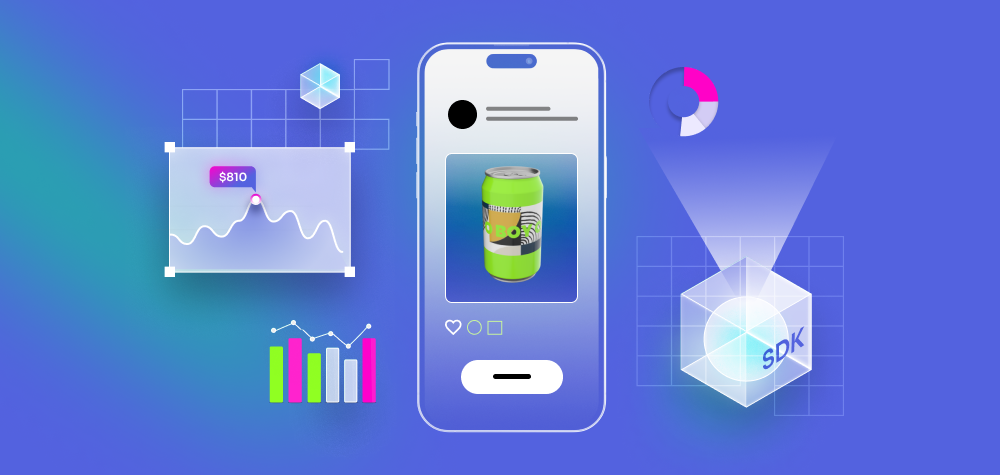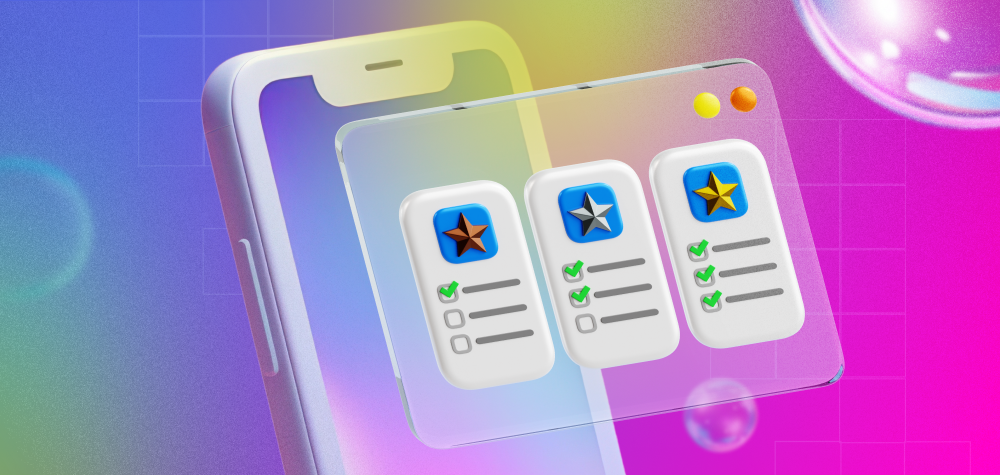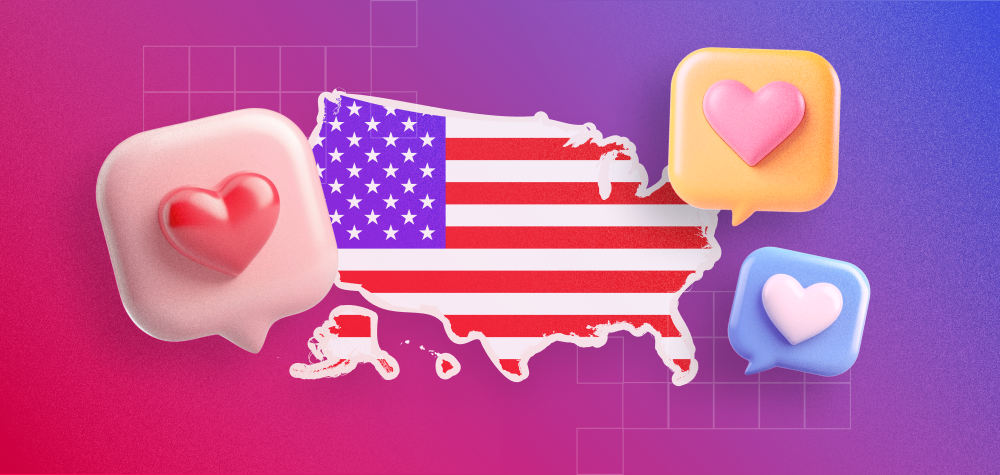For app developers and owners, earning income from apps is one of the biggest challenges.
Successful app monetization means more than sheer profit for the sake of it. The more revenue the app generates, the more resources are available for further development of new features and capabilities. This enables you to scale the user base and boost the app’s success even further.
There are several ways to monetize an app, but the key question in this article is:
What is the best way to monetize with an SDK?
What is SDK monetization?
SDK monetization is the process of monetizing an app with the help of a mobile advertising SDK.
Mobile SDKs, or “software development kits”, are collections of tools and resources that integrate with an app to make app development faster and more efficient. Mobile advertising SDKs specifically connect the app to a third-party advertising platform, so the app can integrate ads from the platform’s advertiser pool, and generate revenue from interactions of app users with those ads.
SDK monetization provides app publishers with access to an efficient and profitable channel for revenue generation. With SDKs, apps “plug in” to advertising platforms with minimal development or programming required. Then, mobile marketers can leverage ad-based monetization strategies, targeting a wide range of ad formats and campaigns to the app audience via the SDK.
The SDK connects the app to all the capabilities of the mobile advertising platform, including analytics and reporting. With a mobile advertising SDK, app publishers also gain access to valuable audience data and ad performance insights, which can be used to optimize the app monetization strategy.
How does SDK monetization work?
Apps that use a monetization SDK approach can tap into existing ad networks and quickly begin generating revenue from in-app ads. The Start.io mobile SDK provides access to 1 billion mobile users every month from all over the world, across a wide range of categories and consumer interests. Apps that integrate with Start.io can leverage a hungry advertiser network who are looking to spend their ad budget in high-quality apps.
To get started with Start.io app monetization, follow these guidelines and resources:
- Integrate the app with Start.io’s mobile SDK.Please note that there are different SDKs depending on the app’s build. Check out the relevant SDK documentation for Android, iOS, Unity and Flutter.
- It is important to test the SDK integration in Test Mode before launching into monetization.
- Start.io SDK is compatible with any other SDKs you may be using.
- Looking for an API solution to integrate your app to the Start.io SDK, or integrate apps in bulk? Learn more here.
Ad pricing models for SDK monetization
There are several app monetization ads and placements available, providing a range of opportunities to engage users and generate revenue inside your apps. These include:
- Banner ads in several sizes
- Interstitial ads, shown at a natural point of transition during app use, such as changing levels in a game
- Splash ads that launch when the app is opened
- Rewarded video ads that provide a reward to the user in exchange for watching the video ad
- Native ads that can be custom designed to fit seamlessly with the in-app experience
- Return ads that are served to users who return to an app after a specified time period
Revenue generated from in-app ads is usually calculated by impressions and app installs that are derived from in-app ads. These are measured via CPM (cost per mille) and CPI (cost per install).
CPM (cost per mille)
CPM is a measure of how much revenue is generated per 1000 impressions (mille) of an in-app ad. It does not require that the app user take any action; rather, advertisers pay simply for 1000 instances of an ad being served inside the app.
eCPM, or effective cost per mille, provides a more insightful measurement rather than just the raw number of impressions served. eCPM is used by app developers to compare how different ads are performing and to determine the success of the ad monetization strategy. Calculate eCPM by dividing the total campaign earnings by the number of impressions of a particular ad from the campaign, and multiply by 1000. By calculating eCPM for several ads, you can determine the ad with the highest eCPM and optimize towards that.
CPI (cost per install)
CPI is a measure of the number of installs of an app that resulted from clicking on an ad inside your app. CPI is calculated by dividing the total ad spend by the number of app installs that resulted from the ad campaign.
The advertiser pays per app install, meaning that the user who installed the app does not need to interact with the app in order for the app publisher to receive the revenue.
How do app owners get paid for ad monetization?
App developers and owners receive ad monetization payments directly from the ad networks that are integrated on their apps via SDKs. By leveraging the advanced ad creation and placement capabilities of the mobile advertising platform, app publishers can optimize their monetization strategy and gain the maximum revenue from in-app ads.
For example, the Start.io app monetization platform uses a revenue-share model. This means that app developers and Start.io share the revenue generated from Start.io ads. Revenue amount will vary depending on a range of factors, such as location, operating system, mobile device and more. App publishers receive payment generated from Start.io in-app ads on an automated, monthly basis.
App monetization without SDK
Advertising is not the only monetization strategy used by developers and publishers to generate revenue from apps. Other paths to app monetization include:
- Freemium apps: Offer a basic, free version of the app, and charge a fee to unlock premium features. Provide a free trial, enticing users to upgrade to paid after the trial is over.
- One-time purchase: Charge users upfront for the app, granting them access without any further payments.
- Subscriptions: Provide access to content or features via monthly or yearly subscription fees. Subscription tiers can offer varying access to features and levels to suit user preferences and budgets.
- In-app purchases: Offer virtual products or gaming ‘currency’ for purchase within the app.
- Sponsorships/partnerships: Collaborate with brands for sponsorships, promotions, or cross-promotions to tap into their audience and revenue.
- Data monetization: Aggregate anonymous user data to sell insights to third parties while maintaining privacy.
- Referral programs: Encourage users to refer friends in exchange for rewards or discounts for successful referrals. This increases the user base and potential revenue.
While app monetization without SDK is possible, it is not recommended. That’s because in-app advertising is an enormous and rapidly growing global market with incredible opportunities for revenue generation. In 2023, the in-app advertising market is forecast to reach nearly $315 billion. By comparison, the potential for app revenue from subscriptions or gaming purchases is significantly smaller. In 2022, app and game revenue was around $130 billion, reflecting a decrease from the previous year.
While it is important to diversify and employ a range of monetization tactics, in-app advertising is definitely worth it, and SDKs make it so much easier. In fact, SDK advertising should be an integral part of every publisher’s toolbox for app monetization and revenue growth.
Connect with us to learn more.



